The Stax SRD-7 energizer works differently than a regular Stax amplifier. It requires to be piggy-backed to a standard speaker amplifier, where it takes the current from the speaker amplifier and convert it to the necessary high voltage power for driving Stax Electrostatic headphones. It remains a popular choice among Stax users as a cheaper alternative than a standard electrostatic amplifiers. 2nd hand units sells for roughly $200 and less, and it runs great out of any vintage stereo receivers.
The SRD-7 pictured here is a normal bias version, where both headphone out has the 6-pin normal bias Stax connectors. There are also pro-bias SRD-7s that accomodates the higher bias Pro-version Stax headphones. The unit itself is fairly small, measuring roughly 12cm x 7cm x 20cm, and it easily finds place next to your computer. The front panel has a knob for turning power on and off. When the knob is on the off position, the signal from your speaker amplifier is passed on to the speakers, thus you conveniently can switch between your headphone and speaker set up.
On the back panel, we find two cables as well as four binding posts for connecting your speakers. The black cable is the AC Power cable, where the gray cable goes into your speaker amplifier. Conveniently, Stax included the cabling legend for connecting the SRD-7 to your speaker amplifier. Power consumption is surprisingly low at 0.1w.





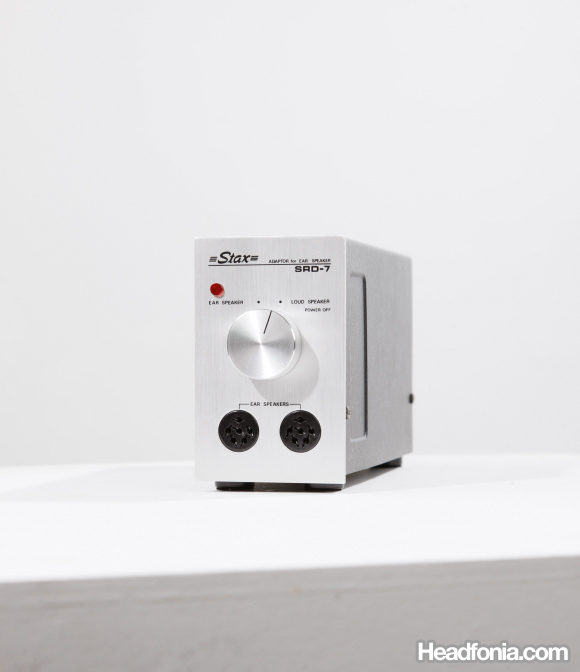
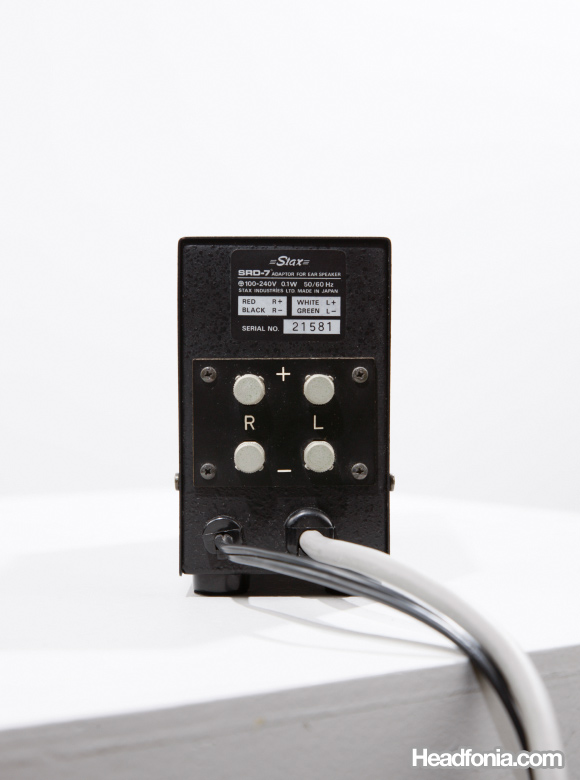
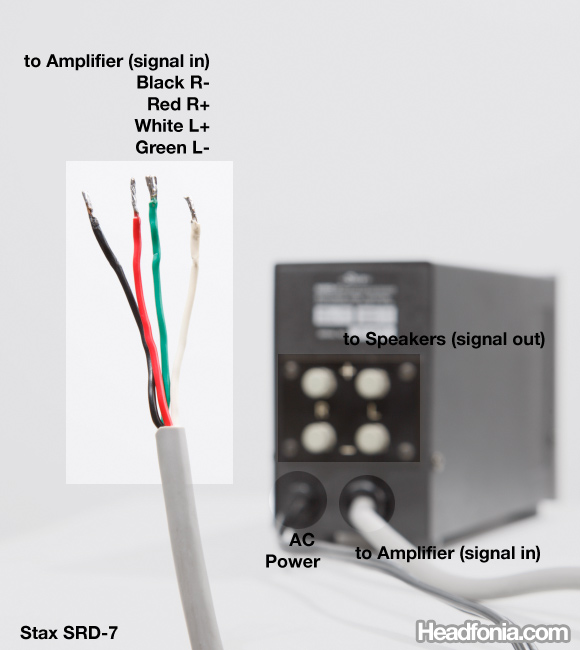
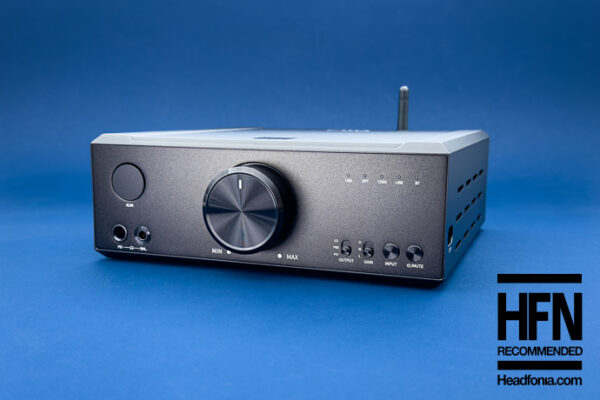
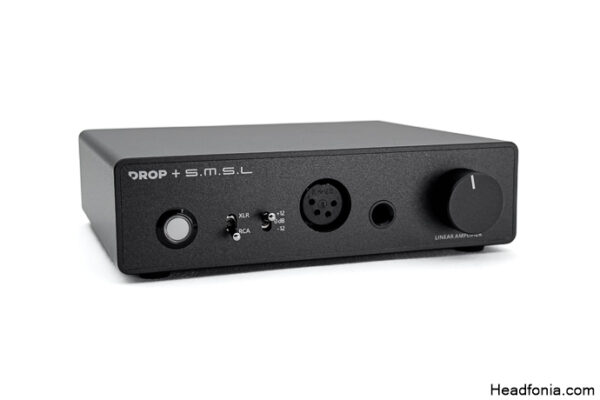
manaox
$200 is running a bit high for the normal bias SRD-7. I sold an SRD-7 Pro at that price (low sell, but still). I wouldn’t pay more then $80.
Mike
I see, thanks for the input manaox. I think you know the Stax 2nd hand market price better than I do.
ChaoticAngel
Mike, Please submit pict for simple set up for this old Stax type (YM-ed)
T.I.A
Mike
Dude,
You mean a photograph of a simple set up for an SRD-7?
ChaoticAngel
Yes Sir :), never had chance to see simple(st) set up when I was in Jakarta. I saw (heavy)full set one at Winsome's maybe you can elaborate more how will it works with foobar as my source. (got Little dot DAC on my list).
Mike
It's pretty simple.
Basically, these SRD boxes need to be paired with a speaker amp (I'm sure you know what a speaker amp is). It can be a small T-amp such as this one from Whiplash: http://www.cryo-parts.com/images/pop_pulse_t-amp_… or it can be a big receiver such as this one from Adcom: http://www.adcom.com/prod/shopdisplayproducts.asp… or an integrated amplifier, or a big tube amp, basically anything that you normally use for driving Speakers. You connect the leads to the speakers terminal and that's how the SRD boxes receive power to drive the electrostatics.
Using foobar, a simple set up would be: Laptop > USB DAC > Speaker amplifier > SRD 7 > Stax amplifier.
ChaoticAngel
and, what's difference between Normal Bias and Pro-Bias, pardon my stoopidity 🙂
Mike
Basically Stax Electrostatic headphones fall into two categories:
Normal bias, and Pro bias.
If you look at the connector for the headphone, it has 6 holes which means it takes headphones that has a 6-pin connector. This is normal bias, and it runs on a 230V bias voltage. The pro system uses a 5-pin system, thus a "pro bias" headphone would have a 5-pin connector, and a "pro bias" amplifier would have a 5-hole connector.
For example this KGSS has a 5-pin "pro bias" connector: http://www.headfonia.com/wp-content/uploads/2010/…
and this SRM1Mk2 amplifier takes both pro and normal bias: http://www.headfonia.com/wp-content/uploads/2009/…
And from the SR-404, SR404LE, and Lambda Pro review:
On a side note, the Stax electrets use 5 pins connector but they must not be mixed with the Stax Electrostatic amps.
http://www.headfonia.com/wp-content/uploads/2010/…
ChaoticAngel
Gotcha, will it provide effect to the sound quality? which one is better in all aspects?
thank you most kindly!
Mike
I don't think you totally understand the concept here.
You can't really choose one bias over the other. Some headphones come in normal bias (i.e SR-Lambda). Some headphones come in pro-bias (i.e SR-404 is Pro. There is no SR-404 normal bias). It's the way the headphones are designed. Even in the case of the SR-Lambda and SR-Lambda Pro, they actually sound quite different from each other. So it's a case of choosing the headphone you want.
Cheers.
ChaoticAngel
Hello Mike,
Question, do you need and electricity adapter (e.g 220V to 110V) or this thing can runs on both 110V & 220V?
Mike
Hi Ted,
If you look at the backpanel picture, it says that the input voltage is 100-240V. So, no, I don't think you'd need a step up/down. 🙂
ChaoticAngel
Thanks Mike, can't wait to hook up on my musical stat.
Lawrence
Has anyone tried this at 240V? Just wondering if you have to open it up and change any switches or can it run off any voltage in thre range without any changes?
Thanks, Lawrence
Mike
I actually used it at 240V. It looks like there is nothing to change if you want to use it at 110V, since the voltage indicator says 110V – 240V
Brian Beattie
I have had these SRD-7s for many years. I just bought a Denon 1911 7.1 receiver. Can the headphones be connected to the 6/7 speaker terminals (normally for side speakers in a 7.1 setup) on the receiver?
Many thanks,
Brian
Mike
Hi Brian,You mean the SRD7 connected to the 6/7 outputs?
Brian Beattie
That's what I meant, but I don't think it makes sense because the other speakers will still be heard. There are different 'zone' setups for the Denon receiver – I probably have to get into a separate zone to hear the headphones only???
Mike
I'm trying to understand the situation better here..If you plug the SRD7 to the rear or side channel output, won't that give you the processed surround signal out to the headphones?
Brian Beattie
Denon receivers are very difficult to setup. I'm asking the same question on the AVS forum for Denon 1911 receivers. I'm pretty sure it has something to do with a Zone 2 amp setup on the receiver.
Mike
If you want to still hook it up to the Denon, use the output for the main speakers. Then you can hook the speakers to the SRD7 rear panel. The switch at the front switches between the headphone and the speakers.
Jim
The SRD-7 actually gets its power from an AC outlet, and its audio feed from
a speaker amplifier. The Stax electret headphones (I use an SRS-44 system)
are permanently electrostatically charged so that they don’t need a power source.
The SRD-4 adaptor has no bias. It merely sends the audio signal from a
power amplifier to the SR-40 electret headphones.
When used. with an excellent source and amplifier these older Stax systems
can sound quite good, offering much more transparency than any dynamic
headphone at several times the price the old Stax systems are selling for.